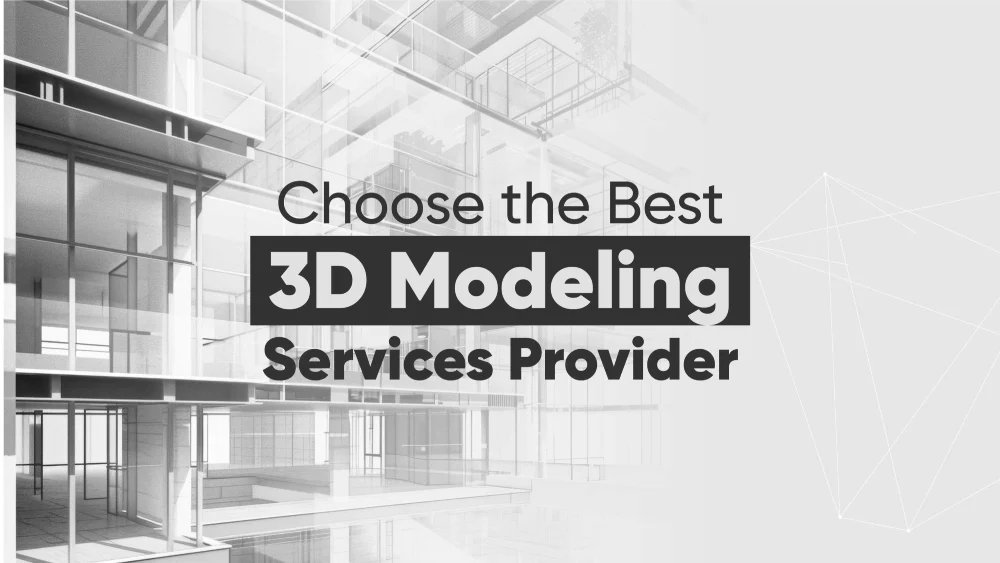Choosing the right 3D modeling company can elevate your product design, boost your visuals, and open doors to VR and AR experiences. From photorealistic rendering to custom 3D modeling, working with the right provider ensures quality, speed, and innovation.
In this guide, you’ll learn how to spot top-tier 3D product modeling services, what to consider before you outsource, and how to align your goals with the ideal team. Ready to make your ideas come alive in 3D? Let’s jump in.
Why Choosing the Right 3D Modeling Services Provider Matters
Choosing a 3D modeling company isn't just about offloading a task; it's about selecting a strategic partner that can transform your concepts into reality through high-engagement and high-impact visuals. A professional and experienced 3D modeling company can not only slash your project timelines but also increase stakeholder engagement and improve the overall quality of your digital assets.
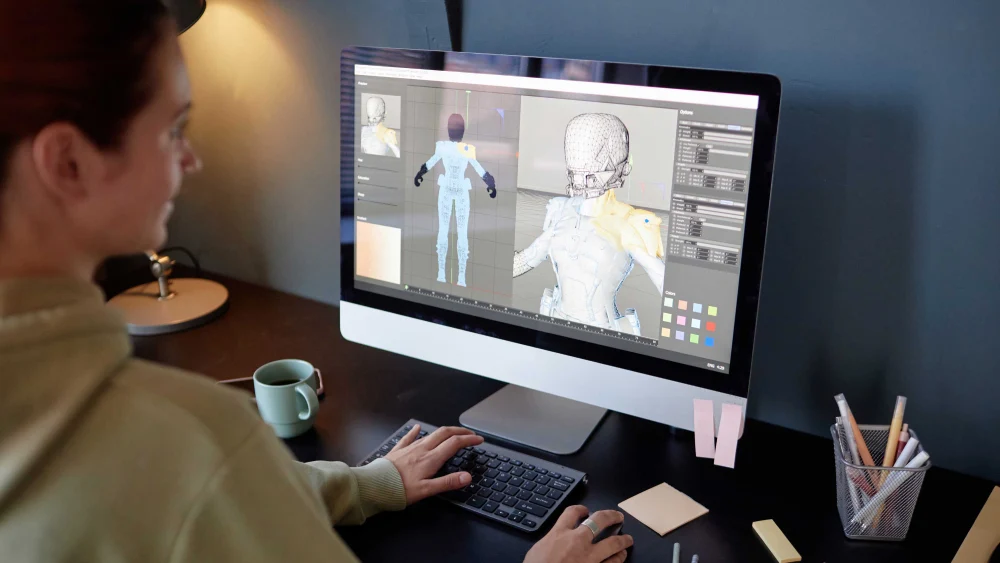
Why it matters to get it right:
- Photorealistic Accuracy: High-quality 3D modeling produces visual content that is imperceptible from actual products or environments. Materials enable stakeholders, customers, and investors to emotionally invest in your concept, whether it's a revolutionary architecture concept or product design. Realism fosters trust and allows decision-makers to view products more clearly.
- Speed and Efficiency: Time-to-market is of crucial importance in retail, architecture, and tech industries. Your 3D partner will not only adhere to your timeline but also utilize optimal workflows, automated tools, and fast prototype methods to complete projects efficiently without compromising quality. Your selected supplier is a force multiplier to your internal capabilities.
- Scalability: Your modeling requirements will be modest but increasing quickly, especially if your business expands its inventory or enters new markets. The most capable 3D modeling companies are designed to scale; they have high-volume output capacity and can redeploy resources as needed for each project. This maintains the skill of your operations and prevents them from getting derailed.
- Technical Accuracy: Engineering, manufacturing, and healthcare allow for no room for mistakes. Files' tolerances, scales' accuracy, and simulation of reality must be to a professional standard. An excellent provider should have experts with expertise not only in design, but also in physics, mechanics, and industry compliance standards.
- ROI Maximization: Smart investment in high-quality 3D assets generates returns in various ways. It eliminates the cost of physical prototypes, reduces product return rates due to better visualization, increases conversions in online advertising, and creates reusable assets across platforms. In the long term, your visual infrastructure is a good business asset.
- Dangers of Selecting Cheap Providers: A low-quality 3D service may trigger cascade failures, late product releases, incompatibility with your tech stack, brand misalignment, or even necessitate redoing the entire project. Miscommunications, surprise costs, and variable file delivery could cause delays for your business and harm your reputation with customers or stakeholders.
By emphasizing quality, dependability, and industry fit in your recruiting process, you are protecting your investment and ensuring long-term project success.
Who Requires 3D Modeling Services?
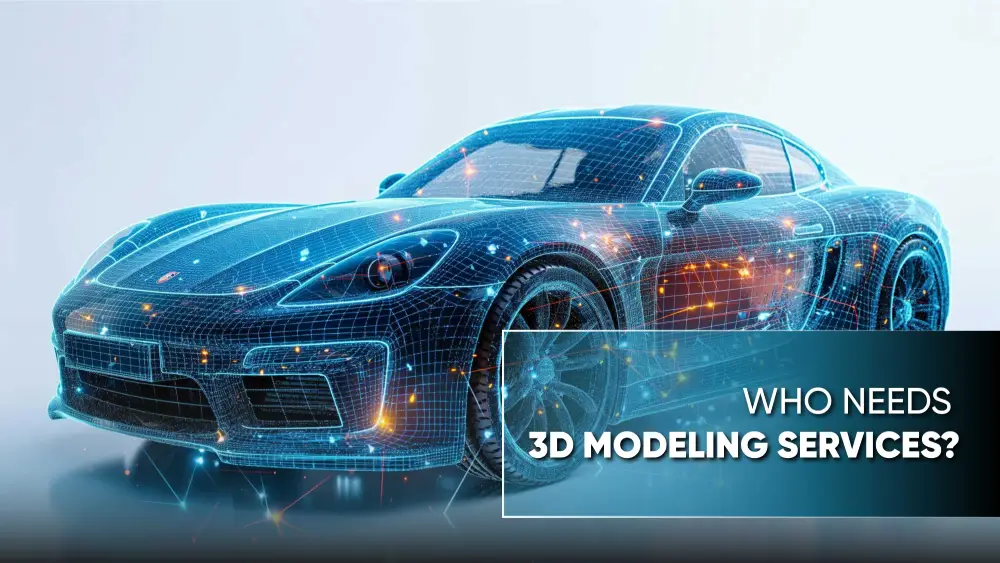
3D modeling is not restricted to a specific industry. It's a necessary tool for each of industries, changing workflows, enhancing user experience, and facilitating innovation. The following are the primary industries where 3D modeling is currently used for their needs:
E-commerce
Online shopping companies are using 3D product modeling to enhance user experience and boost sales conversion rates. Photorealistic 3D models replace static images, presenting consumers with a 360-degree experience of products. Augmented Reality (AR) previews enable users to see products in the physical world (e.g., seeing furniture fit into a space). Virtual try-ons for fashion and eyewear minimize return rates and improve customer satisfaction.
Architecture and Real Estate
3D modeling helps architects and developers with idea 3D visualization and facilitating client communications. Architectural visualization allows it to exactly and realistically display buildings to be constructed. Virtual walk-throughs and provide clients with interactive tours before laying the first brick. Landscape, interior visualization, and environmental models help in planning, land use, and presentations.
Manufacturing and Engineering
They depend on precision, and 3D modeling is applied from design to prototyping. Engineers employ it for CAD-to-3D translations for simulation and testing. Ensures accuracy before fabrication by mechanical part modeling. Rapid prototyping accelerates product development and enables rapid iteration.
Gaming and Entertainment
3D modeling is the foundation of the gaming and visual entertainment industry. Characters, props, weapons, and environments are modeled using high-poly or low-poly modeling. Visual storytelling in cinematic cut-scenes depends upon sophisticated 3D models. Virtual reality (VR) gaming requires immersive assets that are based on realistic physics.
Marketing and Advertising
Marketers use 3D assets to create compelling, adaptive, and interactive campaigns. Three-dimensional product videos and 3D advertisements make waves on social media. 3D advertisements can draw audiences more discreetly than conventional methods. Branded 3D photos provide freedom to be creative without limiting it to reality-based equipment configurations.
Education and Training
3D modeling transforms the presentation of educational and technical information. Anatomical and biological models assist medical and biology research. Industrial equipment simulations train engineers and technicians. 3D learning helps make learning fun and convenient.
Healthcare
Accuracy is of the maximum significance in medicine, and 3D modeling enables innovation and patient safety. Surgeons apply anatomical models adapted to the patient to plan surgery. Healthcare device companies design visualizations for instruments, implants, and procedures. Prosthetic and biomechanical simulation enhances personalization and outcomes.
Fashion and Footwear
Fashion turns digital, and 3D modeling sits at the center of this revolution. Designers design virtual garments for digital fit, saving fabric and time. Fashion runs have become virtual through 3D avatars and fashion wear. Companies test shoes, handbags, and accessories in 3D before production.
If you aim to save on development expense, create more consumer involvement, or expand production assets, 3D modeling solutions have become a necessary tool in just about every industry.
Key Factors to Consider When Choosing a 3D Modeling Services Provider
The visually driven world we live in today makes 3D modeling a necessity for businesses ranging from the likes of e-commerce and property to gaming, fashion, and production.
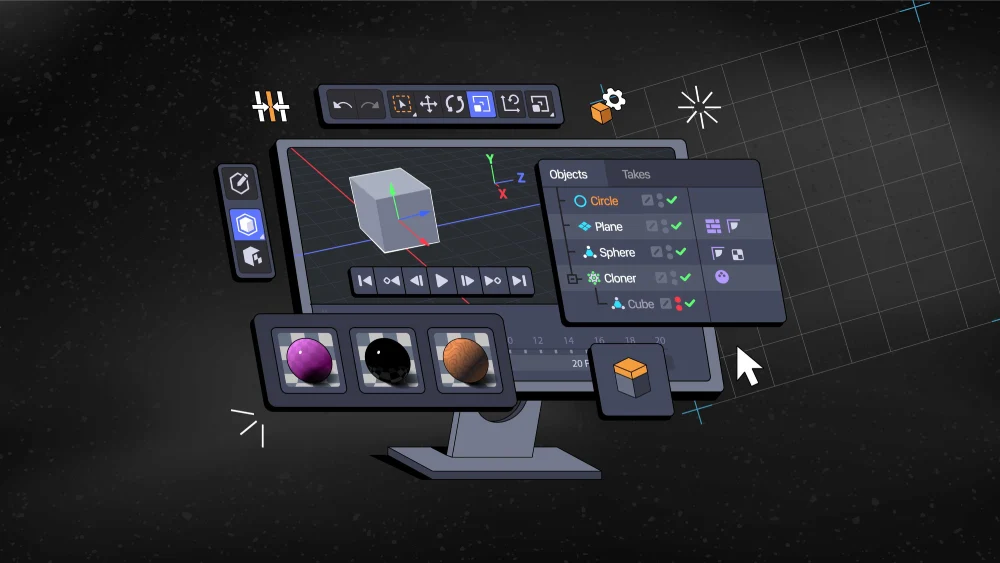
Whether you're designing product images, building architectural mockups, or creating virtual worlds, the selection of a 3D modeling services provider can make or break your project. The following is the most critical thing to consider prior to making your ultimate choice.
1. Experience and Appropriate Portfolio
Most importantly, consider the provider's experience and portfolio. Do they have a vast and mixed portfolio that is in line with your industry and requirements? Were they able to complete projects of the exact nature as your requirements? A successful track record means that the provider is reliable, technically competent, and able to handle various styles and specifications.
2. Technical Competence and Instrument Proficiency
3D modeling requires technical competency as well as artistry. Ensure that the contractor is familiar with handling cutting-edge software like Blender, Autodesk Maya, 3ds Max, CLO3D, or ZBrush based on the type of your project. The models they create should display clean geometry, realistic texture, UV mapping, ray tracing, and performance optimization, particularly if the assets will be rendered in real-time or animation.
3. Communication and Collaboration
Good communication is key to translating ideas into correct imagery. A quality 3D collaborator will listen attentively, grasp your design vision, and keep you informed step by step. They'll be receptive to your suggestions, responsive, and keen to debug. Smooth collaboration is a timesaver, especially in iterative or prolonged projects.
4. Scalability and Adaptability
Projects change all the time. From a change in creative direction to a last-minute volume surge, your vendor must be adaptable enough to keep up. Scalability is also essential; can they handle mass model creation without sacrificing quality or timelines? Especially relevant for brands that have a huge library of models for e-commerce or web platforms.
5. Turnaround Time and Workflow Efficiency
Deadlines are important. Find out their average response times and how they handle project workflow. Streamlined internal processes and established timetables prevent delays, getting your 3D assets to you when you require them without losing quality.
6. Data Security and Confidentiality
Intellectual property security is essential. The supplier ought to maintain strict data security measures in place and be prepared to sign NDAs. This becomes especially significant in the case of product launches, exclusive designs, or confidential architectural designs.
7. Cost-Effectiveness and Value
Though cost is always a consideration, don't make decisions solely based on cost. Set the value first. A provider charging a bit more may deliver higher quality, better service, and faster turnaround, saving you time, revisions, and frustration down the road. Request detailed quotes and compare apples-to-apples based on what's included.
8. Trial Project or Test Work
Request a sample model or a mini-project to measure their skills, attention to detail, and responsiveness. It helps to decide if their work style, quality, and understanding align with your business needs. A well-executed test piece shows commitment and gives you confidence before scaling up.
Selecting an effective 3D model services provider is about more than checking boxes on a technical checklist. It's about discovering a creative business ally who grasps your concept, responds to your requirements, and helps deliver your project's success through excellent work and reliable service. With a proper provider, you're not just acquiring beautiful 3D models, you're gaining peace of mind.
What Does 3D Modeling Typically Cost?
Pricing of 3D modeling services depends on several points, including the complexity of the object, level of detail, rendering needs, interactivity (such as AR/VR capabilities), quantity, and turnaround time. Below is a general cost range based on typical service tiers:
- Basic Product Models ($100–$500): It's ideal for simple geometric shapes or products without textures. Usually used for internal design drafts or basic product catalogs.
- Mid-Level Models with Textures & Lighting ($500–$1,000): Has textured surfaces, realistic lighting, and basic rendering. Suitable for e-commerce stores, marketing materials, and product previews.
- Complex Architectural Models ($1,000–$5,000+): Covers buildings, interiors, landscape integration, and lighting setups. May include interactive walkthroughs or staging.
- AR/VR-Ready Models ($2,000–$10,000+): Optimized performance in Unity/Unreal Engine. Includes retopology, LOD optimization, and real-time rendering readiness.
- Full Animation Sequences or Walkthroughs ($5,000+): Includes camera movement, storytelling, voiceovers, or sound design. Perfect for real estate presentations, ads, or product launches.
Pro Tip: Always request an itemized quote that outlines modeling, texturing, rendering, revisions, and licensing. Clarify how many revisions are included and how additional ones are billed. Transparency upfront avoids budget overruns later.
Why Choose The KOW Company for 3D Modeling?
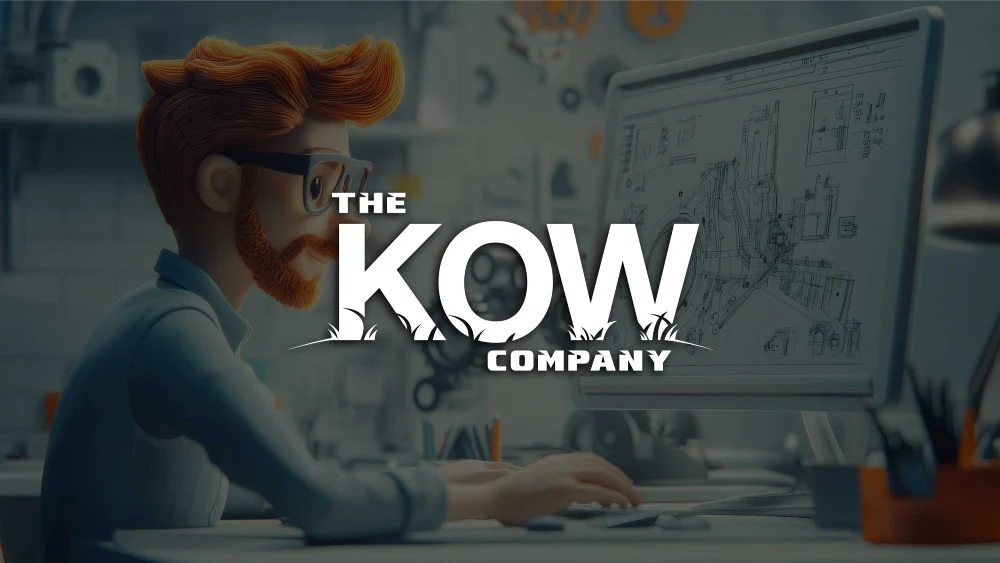
At The KOW Company, we do more than run-of-the-mill 3D modeling solutions by providing strategic, scalable, and technology-enabled solutions to every client's purpose. Here's why we are a top-choice 3D modeling partner for retail or global brands:
Industry-Specific Solutions
We know the specifics of various industries and offer purpose-made 3D assets:
- E-commerce: High-conversion product pictures, 360-degree photos, and AR-compatible models.
- Architecture: From blueprints translation to interactive virtual tours with hyper-realistic rendering.
- Manufacturing: CAD file conversion to live simulations for product testing.
- AR/VR: Optimized interactive models for Unity, Unreal, and WebAR to deploy smoothly.
End-to-End Delivery
Our end-to-end pipeline covers all steps in 3D asset production:
- Modeling, texturing, rigging, lighting, rendering, and animation included.
- Exports in a variety of formats, OBJ, FBX, GLTF, STL, and special requests.
- A complete QA process to ensure all files are suitable for your application requirements.
- Guaranteed on-time delivery through careful project planning and milestone tracking.
Revisions and Support
Client satisfaction guides our process:
- Multiple rounds of revision to enhance your vision are offered.
- Open collaboration with Microsoft Teams, Slack, Trello, or your choice of tools.
- Your project is assigned a dedicated manager for smooth communication and easy feedback.
- Compatibility with real-time engines and XR pipelines for immersive applications.
Partnering with The KOW Company means investing in a long-term ally that blends creativity, technical mastery, and innovation to bring your 3D vision to life.
How to Get Started
- Define Your Project Scope: What do you need? Models for AR? Product visualization?
- Run a Test Project: Evaluate workflow before scaling.
- Request Quotes: Get clear breakdowns, delivery timelines, and revision clauses.
- Review, Revise, Approve: Follow structured checkpoints for final delivery and onboarding with The KOW Company.
The Future of 3D Modeling Services: What's Next
3D modeling has already revolutionized gaming, e-commerce, real estate, architecture, and fashion industries. But the future of 3D modeling services is even more promising with technology, automation, and AI changing the game faster than ever before for producing, editing, and consuming 3D content. 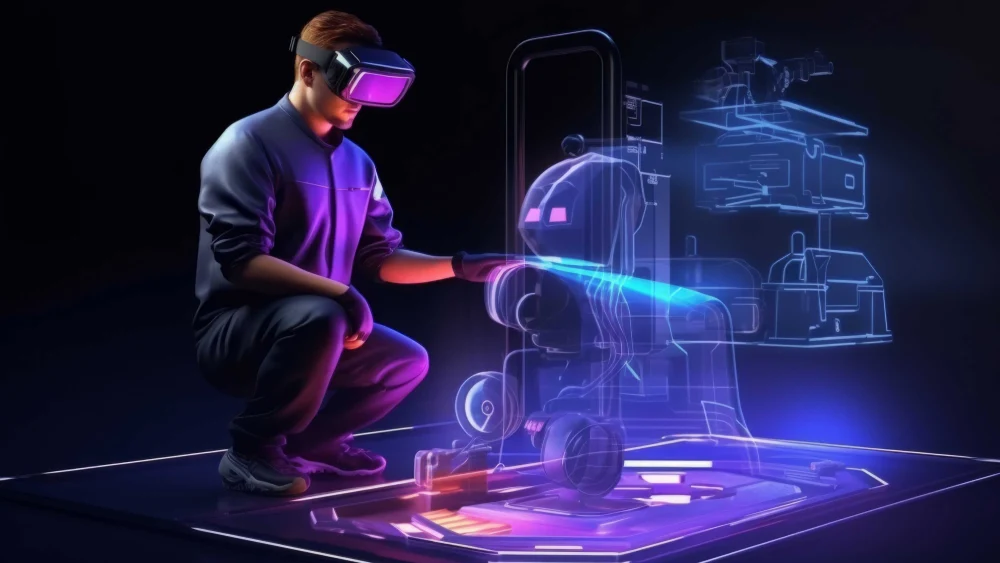
Companies that remain at the forefront of these trends will be at a competitive advantage when it comes to storytelling, product visualization, and user experience.
1. AI-Powered Modeling and Automation
Artificial Intelligence is transforming 3D creation through auto-complex processes and time savings. Tools such as Holosnap enable users to turn 2D drawings or pictures into complete 3D models in a matter of minutes. Tools with AI can texture models automatically, rig characters automatically, and mesh optimize structures for performance. Predictive design algorithms assist in creating model variations for A/B testing for marketing or e-commerce applications.
2. Real-Time Customization and Interactivity
Consumers always demand more personalization. With the growing popularity of real-time engines such as Unreal Engine and Unity, 3D models are rapidly becoming interactive and reactive. For fashion virtual try-ons, real-time product configurators, or property sales walkthroughs, next-generation 3D services will need to respond to dynamic user-controllable experiences.
3. Cross-Platform 3D Integration
As AR, VR, and the metaverse go mainstream, 3D assets will need to be optimized for deployment on a mixture of platforms, from web browsers and smartphones to VR headsets and game consoles. This demands lightweight, flexible models that are easily able to transport across environments without compromising detail or performance.
4. Cloud-Based Collaboration and Workflow Tools
Remote collaboration and global teamwork have brought cloud-based 3D modeling into the spotlight now more than ever. Software such as Autodesk Forma, Clara.io, and Gravity Sketch are facilitating designers, developers, and clients to collaborate in real-time. More cloud-first 3D environments will arise in the future that enable instant feedback, approvals, and updates without version control problems.
5. Photorealism and Simulation
Improvements in the rendering engine and materials libraries are taking photorealism to new heights. Simulations of real lighting, shadows, textures, and physics-based simulations are shortly going to be the norm. Clients will more and more be seeking realistic visualizations, particularly for e-commerce, since 3D product visualization is rendering photography bygone.
6. Virtual Prototyping Sustainability
3D modeling eliminates the use of physical prototypes and samples, particularly in industry, fashion, and product design. Not only does it save time and money, but it also promotes green practices. In the future, 3D will increasingly be utilized as a green solution, with digital twins and virtual prototyping being the new normal in product development.
7. Metaverse and Extended Reality (XR) Demand
With businesses exploring opportunities in virtual worlds, demand for 3D content is growing. Brands require avatars, virtual shops, wearable assets, and digital property to move into the metaverse. Schools of education and educators are using VR-based simulations developed by precise 3D models. Particularly, game developers require highly optimized assets for AR/VR to provide learners with optimal performance and realism.
The future of 3D modeling services is bright, immersive, and accessible like never before. With technologies that are constantly growing, fast, scalable, and interactive 3D solutions will grow exponentially, driving innovation in industries. Those businesses ready to adopt those trends will not only appear different but also provide more entertaining, productive, and sustainable experiences to their fans.
Frequently Asked Questions
What industries use 3D modeling services?
3D modeling services find applications in industries such as architecture, real estate, product design, e-commerce, fashion, gaming, film and animation, advertising, healthcare, and manufacturing. All of these industries use 3D assets to visualize, prototype, market, and simulate.
What is the average cost of professional 3D modeling services?
Fees range greatly based on the level of complexity, the level of detail, and the turnaround time requested. Generally, low-level models begin at $100–$500, whereas high-level or high-detail models will cost up to several thousand.
How long does a typical 3D modeling project take to complete?
The project timeline varies with the level of detail, revision, and amount of work. Low-detail models could be 1–3 days, detailed models, animation, or entire scenes could be 1–4 weeks or longer.
What file formats should I expect to receive from a 3D modeling service?
The most popular export formats are .OBJ, .FBX, .STL, .GLB, and .3DS. For product or CAD design, .STEP or .IGES can also be delivered.
Is it better to hire freelance 3D modelers or an established company?
Freelancers are more economical for small, short projects, but established companies have generally higher dependability, quicker turnaround, wider expertise, and expandable team support.
Can I request changes to my 3D model after seeing the first draft?
Yes, the majority of 3D modeling services have at least one or two revisions. Ensure you have the revision policy written out beforehand, before starting the project, because some vendors will have extra fees for massive changes beyond the provision of the agreement.
What should I look for in a 3D modeling portfolio?
Seek variety in style, attention to detail in neatness, tidy meshing work, realistic texture, and relevance of the project to your field. A good 3D portfolio should also feature end renders as well as, on occasion, before/after photographs or client testimonials.
Which 3D modeling services are best for architectural visualization?
For architectural visualization, find service providers that specialize in photorealistic rendering, lighting, and camera composition. Choose a team that gets used to architectural jargon and can deliver immersive visuals.
Conclusion
Choosing the best 3D modeling services provider is a strategic decision that impacts your product, customer experience, and bottom line. Consider experience, scalability, software compatibility, communication, and pricing transparency when making your decision.
Whether you're building a virtual showroom, creating realistic characters for a game, or showcasing your next architectural masterpiece, the right partner will bring your vision to life with precision, style, and impact.
If you're looking for a trusted partner who combines artistic quality, technical precision, and enterprise-grade delivery, The KOW Company is your one-stop solution for premium 3D modeling services.
